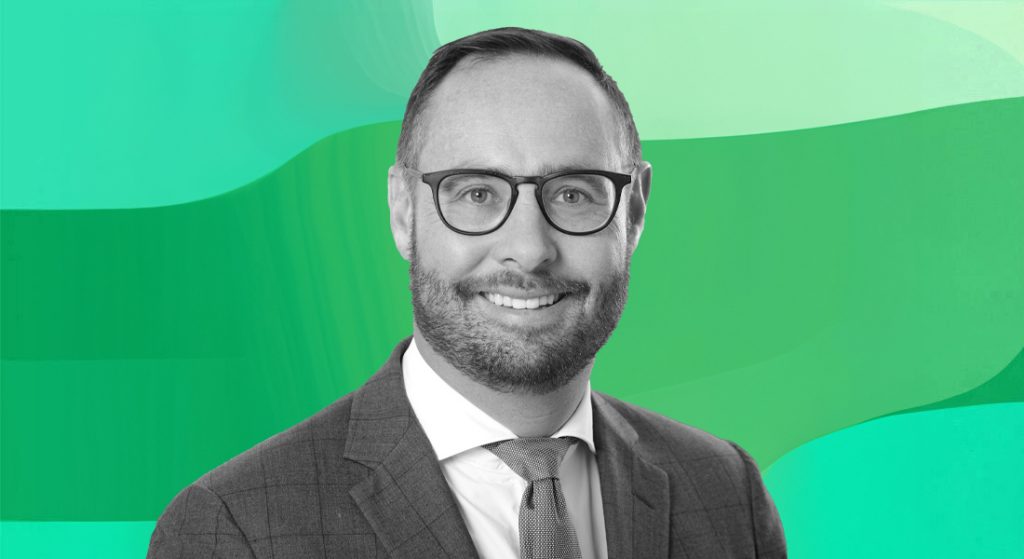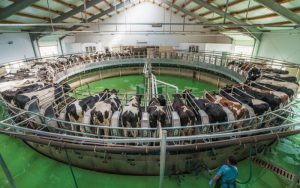
Incoming NZ Super Fund joint chief investment officer Will Goodwin talks with Agri Investor about the future of New Zealand’s sovereign wealth fund, its plans to transform farmland, and the fund’s total portfolio approach.
From its modest beginnings in 2003, when the government established the fund with a NZ$2.4 billion contribution to tackle the growing pension liability of New Zealand’s aging population, the fund has grown to a record NZ$76.65 billion ($46.7 billion; €43.6 billion) as of mid-2024.
Having passed the 20-year mark, NZ Super Fund has matured into its mandate and can now make the claim of being an intergenerational fund.
In preparation for future withdrawals, it is leaning into large-scale infrastructure opportunities, including investments in the energy transition, as it aims to maintain a competitive edge in the global investment arena.
It has been a year of changes at NZ Super Fund, with former Funds SA chief executive officer Jo Townsend taking on the role of CEO in April, and former chief investment officer Stephen Gilmore departing for US pension fund California Public Employees’ Retirement System at the end of June.
Current head of direct investments Will Goodwin, who is set to take the reins as joint CIO alongside current acting general manager of portfolio completion Brad Dunstan on 2 December, told Infrastructure Investor that despite the fund’s growth trajectory, it remains “nimble” in its approach.
Doubling down
As of 30 June, the NZ Super Fund has reached a record NZ$76.65 billion, an increase of 17 percent on the NZ$65.40 billion of the previous year – beating the fund’s average 10 percent annual return since inception.
The fund’s performance this year, at 14.9 percent, was just below the 15.13 percent of its passive reference portfolio benchmark, with strong public markets outperforming the fund’s active strategy in the short term.
However, the fund has consistently beaten the benchmark over five-, 10- and now 20-year periods, and over its lifetime, its active management has added NZ$17.28 billion more than a passive strategy would have achieved.
Goodwin said the fund is on track to hit NZ$100 billion well before the end of the decade.
“By the 2040s we’ll be getting close to NZ$200 billion, and then we keep doubling roughly every 10 years,” Goodwin said.
“You get pretty big pretty quick when you double every 10 years.”
It helps that the government does not plan to make withdrawals to help pay for superannuation until the mid-2030s, but even then, Goodwin said, the fund will “continue to grow effectively into perpetuity”.
Such growth may be necessary as New Zealand’s population ages: 22 percent of the population is projected to be 65 or older – and thus qualify for superannuation payments – by the late 2030s.
“We know we have a growth profile we need to maintain,” Goodwin said.
“That in itself will maintain a high risk exposure.”
Goodwin said the fund’s long-term, intergenerational view helps it to differentiate itself from the competition.
At the heart of this is NZ Super Fund’s much-lauded total portfolio approach.
Goodwin said while using strategic asset allocations may be easier to operate from a team-culture standpoint, with each portfolio manager responsible for a siloed asset class, the TPA model suits a long-horizon investor like NZ Super Fund.
It is less common for Australian superannuation funds to use the TPA model; Hesta is a notable outlier, while AustralianSuper pursues a “one-portfolio approach”, although both funds still have strategic asset allocations.
Meanwhile, Australia’s Future Fund – being a sovereign wealth fund like NZ Super Fund – employs the TPA model, as does the New South Wales government’s financial services partner TCorp.
“Those are investors that have one or two clients, ie, the government, not hundreds of thousands of members who check their super balance every day and are worried about volatility,” Goodwin said.
While NZ Super Fund seeks to attract experts focused on specific asset classes like infrastructure, its total portfolio approach means such investors also need awareness of the wider portfolio and how their assets fit into the mix.
Goodwin said managers need to assign equal importance to considering the right time to sell an asset and harvest returns for the full portfolio, as to deliberating over the next asset to buy.
As evidence of this, earlier this year NZ Super Fund sold its 19.8 percent direct stake (alongside Teachers Insurance and Annuity Association of America) in Melbourne’s EastLink toll road to QIC and the Future Fund, freeing up capital for new assets.
Developing infrastructure
Although NZ Super Fund’s allocations shift from year to year, as of 30 June, the fund had a 5 percent allocation to infrastructure.
Among its largest managers is Morrison, appointed in 2006 and now managing investments of more than NZ$2.6 billion, or 3.6 percent of NZ Super’s funds, including investments in retirement community developer Retire Australia, energy and water utility Altogether Group, and renewable energy companies Galileo Green Energy and Longroad Energy.
In the latter, NZ Super Fund has also made a co-investment, bringing its stake in Longroad Energy to 37.3 percent with a value of about NZ$1.9 billion.
Goodwin said NZ Super Fund has had a preference for infrastructure at the development stage.
“We haven’t had a larger programme like the Canadians, because those guys have very large withdrawal programmes – they need inflation matching within their actuarial models and infrastructure is a good thing on those.
“We haven’t needed that, so we haven’t had as high an allocation to infrastructure.”
Goodwin said while this allocation could increase in future “with the right opportunities”, he does not expect NZ Super Fund to move significantly into core infrastructure.
Instead, the fund will focus on opportunities to develop infrastructure “for the future” – and Goodwin said climate change provides some of the clearest opportunities to do so.
Offshore in sight
One such opportunity is the Taranaki Offshore Partnership, NZ Super Fund’s joint venture with renewable energy investor Copenhagen Infrastructure Partners to develop a 1GW wind farm off the west coast of the North Island, which according to Goodwin could meet about 10 percent of New Zealand’s electricity demand.
With most of New Zealand’s hydropower – its largest energy source, accounting for about 57 percent of electricity generation – based in the South Island, Goodwin said the northern location of the wind farm will provide diversification to the country’s energy mix.
“You add a very large, 1GW offshore wind project into the mix, it’s very complementary to the whole system.”
Before considering CIP as a partner for the wind farm, NZ Super Fund had an existing relationship with the manager, having committed up to €125 million into its Energy Transition Fund I in 2021.
“We thought, ‘Who is the best at doing this? Not just who’s had a few ideas – who’s actually built these things before, who operates them?’
“Very quickly, we narrowed it down to CIP.”
At the same time, CIP has been developing a portfolio in Australia through its Southerly Ten platform, which includes its 2.2GW Star of the South and Kut-Wut Brataualung projects, both of which have secured feasibility licences.
Goodwin said although Australia is ahead of New Zealand in awarding exploration permits, the smaller country will likely follow closely on the heels of its neighbour.
Although NZ Super Fund will share the cost – roughly NZ$5 billion – of the wind farm, the scale of the project points to a trend toward larger investments.
“It makes no sense for us to do a NZ$100 million infrastructure investment now, because it wouldn’t even touch the sides.”
Goodwin said large-scale investments will become more important as withdrawals from the fund begin in the 2040s and 2050s.
“I’m not saying we’re going to completely look like a Canadian fund, but there’ll be the potential that we’ll start shifting to having a slightly different composition and allocation, if and when those withdrawals start to ramp up.
“We’re being very tactical; we’re giving ourselves options.
“These are large assets – they may or may not get there, but if they do, they’re going to earn their place in the portfolio and provide the risk-and-return characteristics that we’ll need into the future.”
You can now read the most important #news on #eDairyNews #Whatsapp channels!!!
🇺🇸 eDairy News INGLÊS: https://whatsapp.com/channel/0029VaKsjzGDTkJyIN6hcP1K























